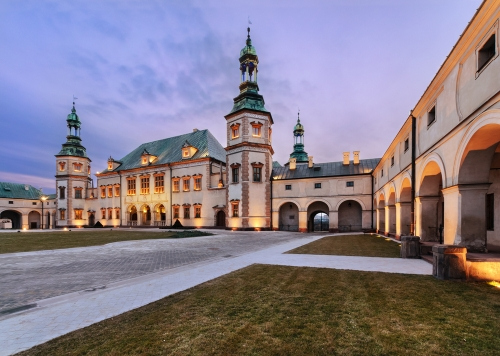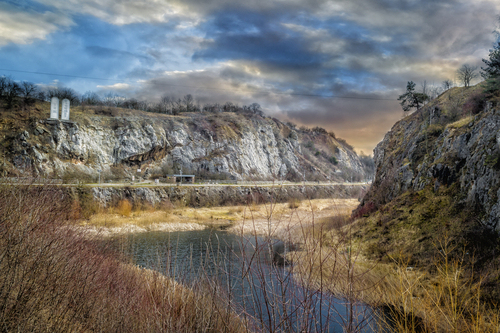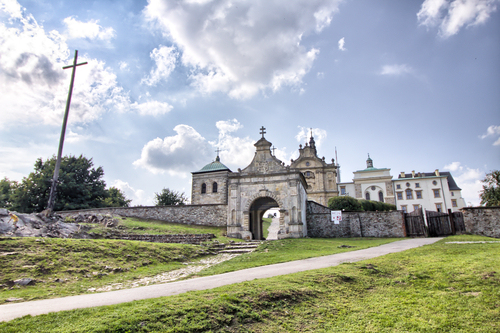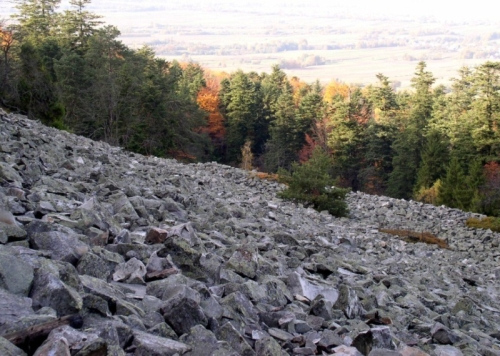Kielce
Kielce is a capital city of the Świętokrzyskie Province. It was first officially chronicled at the end of the 11th century and received municipal rights in 1360. The current population of the city is close to 200 000. The city covers an area of about 109 km2. Its coordinates are: 50° 51′ 57.878″ N 20° 37′ 42.844″ E.

The first technical university, the Academy of Mining was founded in Kielce on the initiative of Stanisław Staszic, the father of the Polish geology, in 1816. At present, the city is the seat of two big universities, the Jan Kochanowski University and the Kielce University of Technology, as well as several higher education institutions.
The most important tourist attractions in Kielce are the Bishops’ Palace with beautiful gardens and the cathedral located on the Castle Hill in the heart of downtown. The Bishops’ Palace in Kielce is the best preserved palace residence in Poland built in the first half of the 17th century. It served as a summer residence for bishops of Cracow. Its interiors are available to visitors as the palace now houses the National Museum in Kielce.
The city is surrounded by forests and mountains. Kielce is often called a paradise for geologists or an open-air geological museum because in the city and its nearby surroundings it is possible to observe sedimentary rock formations representing all periods of the Paleozoic Era. Four geologic reserves are located within the city boundaries. The most often visited reserve is Kadzielnia, situated in an abandoned limestone quarry that was partly transformed into an amphitheater and the rest of its area is available to visitors who are interested in geology and mining. The most popular attractions of Kadzielnia reserve are the caves and the exposed Geologist’s Rock, which is a part of the Devonian coral reef. A less known, but of great scientific value, is the Jan Czarnocki Ślichowice reserve situated in an abandoned limestone quarry with a very well exposed recumbent fold. Because of the unique location of Kielce, there are many tourist and bike trails both in the city and its neighborhood. Biking, hiking, skiing and horseback riding are the most popular recreational activities.
For those, who like sightseeing, the Holy Cross Mts. region offers numerous attractions. The Polish name of the province and the mountains “Świętokrzyskie” originates from the True Cross relics that are stored in the former Benedictine Monastery built in the first half of the 12th century (currently occupied by the Missionary Oblates of Mary Immaculate) located atop the second-highest mount of the main range, called Łysiec Mt. in English Bald Mt. (elevation 594 m above sea level). The monastery is also considered as the place of the origin of the oldest text in the Polish language, the Holy Cross Sermons. Between 9th and 11th centuries, the Łysiec Mt. was a big center of the pagan cult. The remnants of this period are represented by the pre-Christian stone ramparts built of the local quartzite boulders of Cambrian age. The main range of the Holy Cross Mts. is a part of the Świętokrzyski National Park established in 1950 for protection of the primeval fir forest. The Romanesque architecture in the Świętokrzyskie Province is represented by the Cistercian abbeys in Wąchock, Koprzywnica and Jędrzejów, the Collegiate church of Saint Martin in Opatów and the churches in Grzegorzowice and Tarczek. The Gothic cathedrals are located in Sandomierz and Bodzentyn. One of the most beautiful examples of the gothic style is represented by the Collegiate church in Wiślica with a unique sculpture of the Smiling Madonna.
The industrial development of the Świętokrzyskie Province is closely linked to mineral deposits of the region. The first mining activities are dated from the Neolithic to the Early Bronze Age. Striped flint (chert) was extracted in the Krzemionki mine sites, which are now listed on the UNESCO World Heritage List. In the old days, the striped flint was used for making axes, scrapers, tip of spears and knives in nearby workshops. Nowadays, due to the unusual striped patterns, this rock is mostly used for making silver jewelry and production of small decorative stone accessories. Iron ore mining and primitive smelting took place during the Roman period close to the present-day Nowa Słupia town. Lead, copper and iron ores were extracted in the Świętokrzyskie Province, mostly from the Early Middle Ages to the 19th century. The Karczówka Hill is one of five natural reserves within the Kielce city boundaries. It is the only landscape reserve (the other four are geologic reserves), but has also a geological background. Lead ore (galena) was extracted here, mostly in the 17th century. A beautiful and unique memento of this mining on the Karczówka Hill is a 1.5 m high galena sculpture of St. Barbara, the patron of miners and geologists, which can be seen in the monastery church located on the top of the hill. Hard rock mining (limestone, dolomite, sandstone, quartzite) and quarrying for gypsum dominate the present-day mining in the Holy Cross Mts. Apart from mining, other industries in Kielce and surroundings include lime and cement plants, food production and metallurgical factories. Kielce is also famous for its trade fairs and congress center “Targi Kielce”.







